This paddle has had a hard life, shaft split twice. 
First split was stupidly using it on WW on the Mighty TEITH, trying to side surf a wave, doing a deep support stroke to hold the boat in the surf, I hit a hidden rock. That split was up near the handle, it was scarf jointed easily as it was a clean split, with PVA, put lots on as it sucks into the wood. Then it was sealed with a coat of clear epoxy, using the epoxy as a varnish.
That repair lasted a year then the second split about half way down, was me again stupidly, doing a strenuous pry and where the shaft was levering off the gunnell, snap So at least the resin and tape has made the shaft wear point on the gunnell, stronger than it was before !
So at least the resin and tape has made the shaft wear point on the gunnell, stronger than it was before !
So I wrapped it in fine fibreglass tape then stippled resin in, until the tape went clear. Make sure you mix more resin than you need as otherwise you will just about finish painting on the resin and it's about to set hard when you run out of resin !
Another tip is to lay polybags around and below the work areas, also you can hold or use Polyplroplene sheet. As the resin does not bond with PP, as you can see below.
Step 1 - Work Area
Polybags as they don't bond with the resin. Outside as it was a wee bit of wind and full ventilation, otherwise you get high.
Ambient temp was about 20degs, on cool days a hairdryer helps setting of the resin.
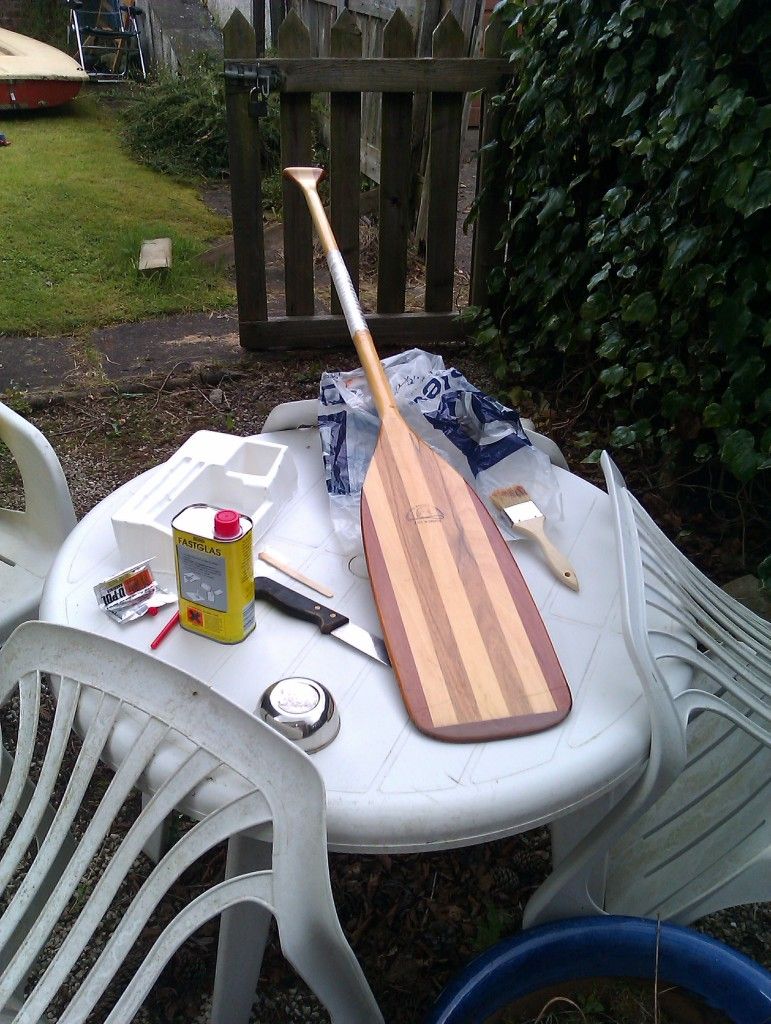
Step 2- Glass tape wrap
I mixed a small amount of resin with a lot of hardener first and put a thin layer of this on the shaft as a quick setting glue to hold the tape in place first.I wrapped the tape tightly around the split area and join I had used a high hardener to resin mix, as a wood glue, although this set in 3-4mins, and beyond about 50mm.
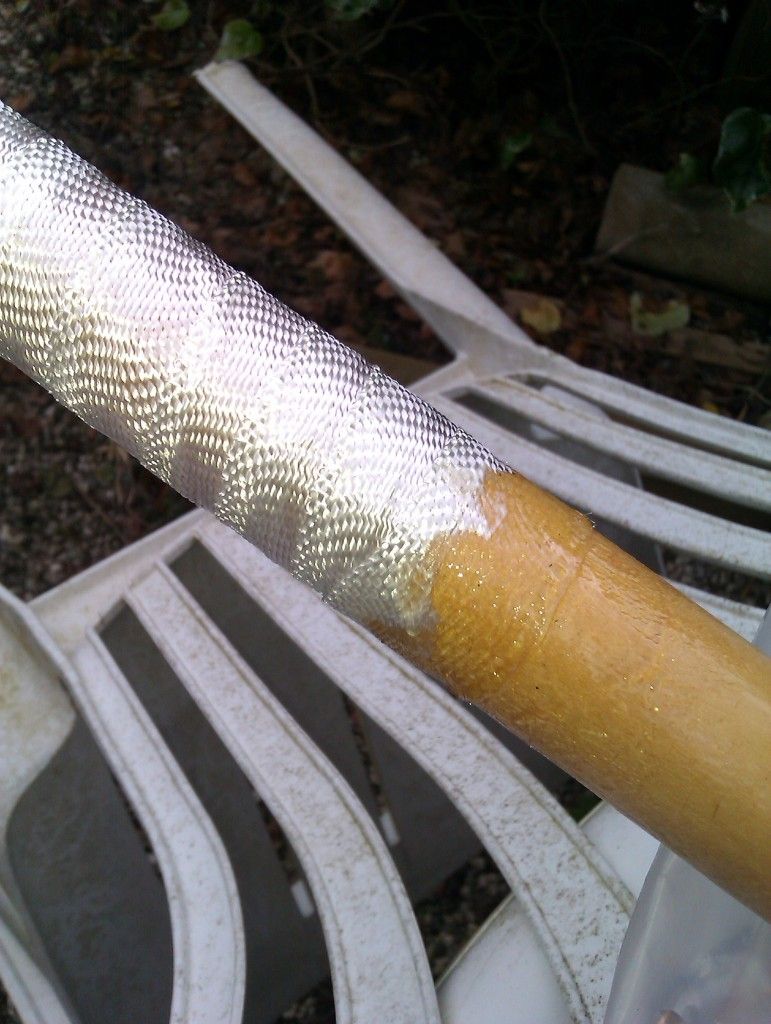
You can see the tape at the bottom has been glued in place, it's the end of the wrap, as described above.
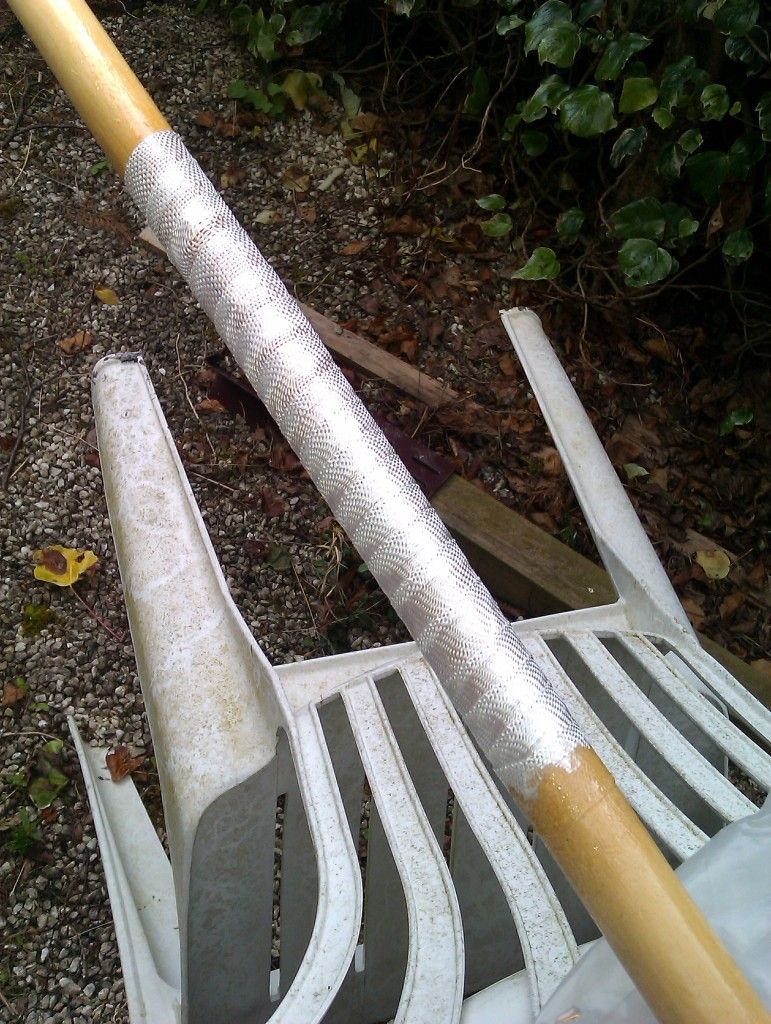
I stippled the resin in slowly building up layers as the tape sucks in the resin until it's saturated, this is when the tape goes clear.
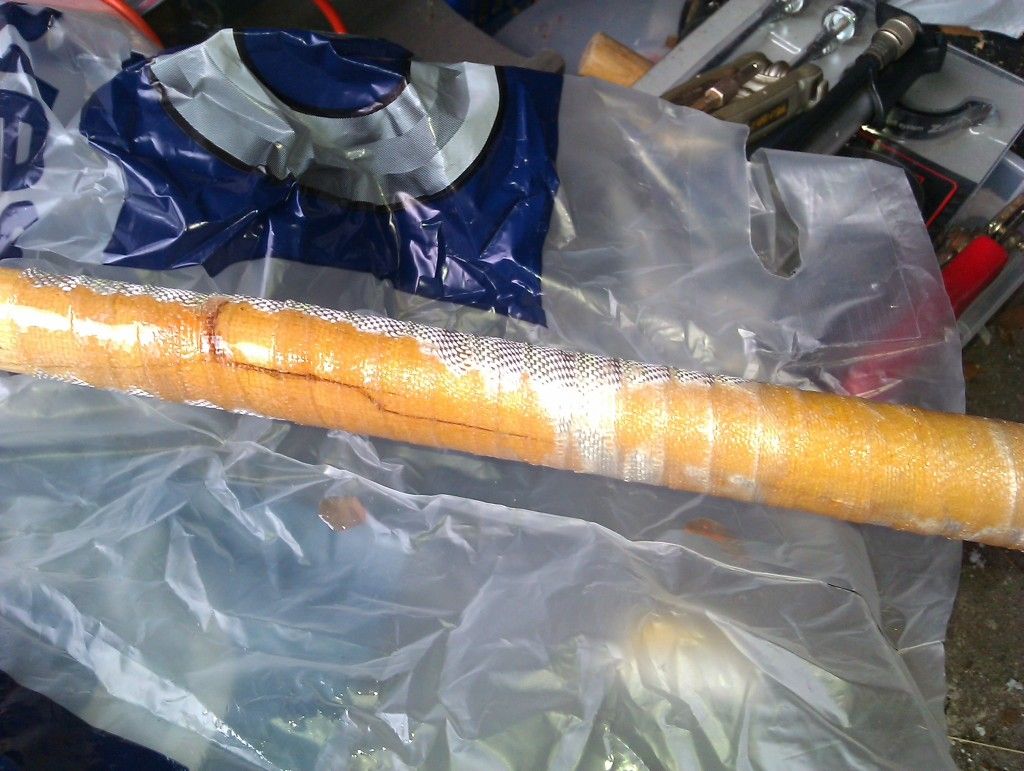
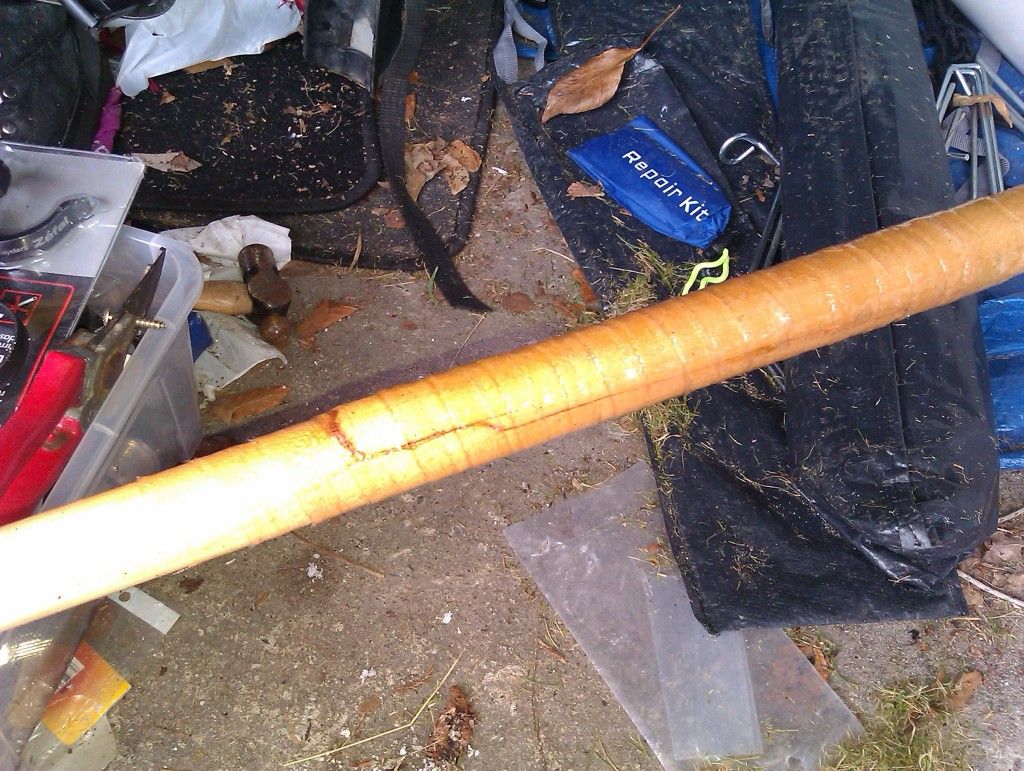
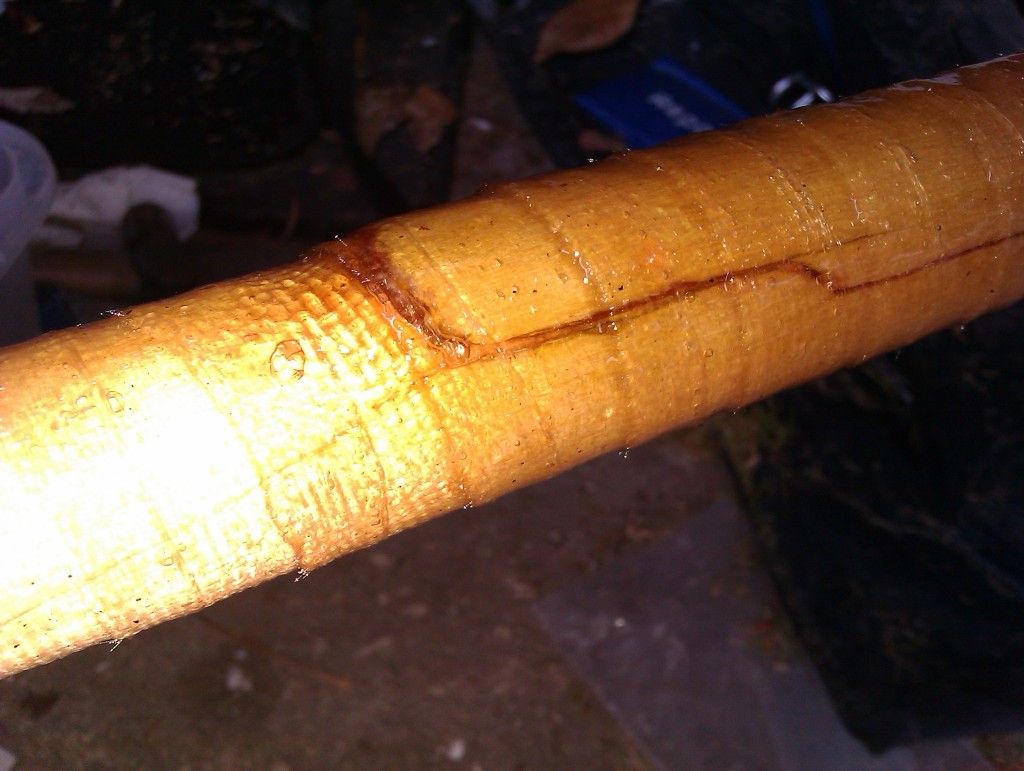
Resin - you can see the solid set resin that was left over, it popped out easily form the '99p for six plastic picnic poundshop glass' as it's 'PP' of polypropelene.
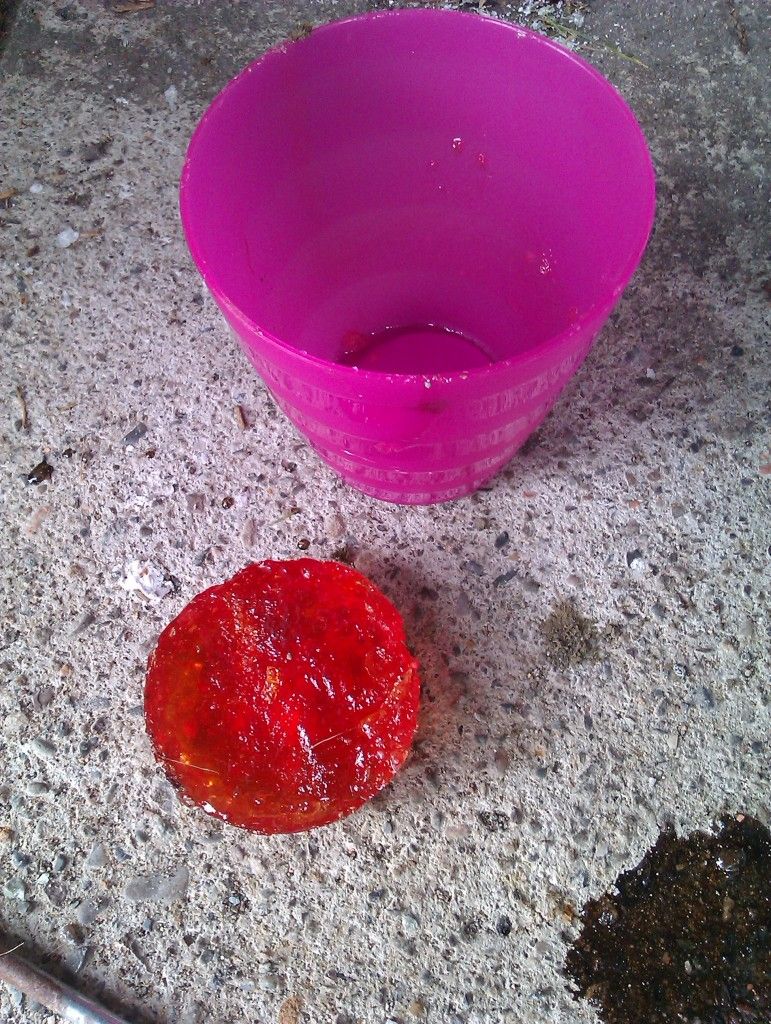
First split was stupidly using it on WW on the Mighty TEITH, trying to side surf a wave, doing a deep support stroke to hold the boat in the surf, I hit a hidden rock. That split was up near the handle, it was scarf jointed easily as it was a clean split, with PVA, put lots on as it sucks into the wood. Then it was sealed with a coat of clear epoxy, using the epoxy as a varnish.
That repair lasted a year then the second split about half way down, was me again stupidly, doing a strenuous pry and where the shaft was levering off the gunnell, snap
 So at least the resin and tape has made the shaft wear point on the gunnell, stronger than it was before !
So at least the resin and tape has made the shaft wear point on the gunnell, stronger than it was before !So I wrapped it in fine fibreglass tape then stippled resin in, until the tape went clear. Make sure you mix more resin than you need as otherwise you will just about finish painting on the resin and it's about to set hard when you run out of resin !
Another tip is to lay polybags around and below the work areas, also you can hold or use Polyplroplene sheet. As the resin does not bond with PP, as you can see below.
Step 1 - Work Area
Polybags as they don't bond with the resin. Outside as it was a wee bit of wind and full ventilation, otherwise you get high.
Ambient temp was about 20degs, on cool days a hairdryer helps setting of the resin.

Step 2- Glass tape wrap
I mixed a small amount of resin with a lot of hardener first and put a thin layer of this on the shaft as a quick setting glue to hold the tape in place first.I wrapped the tape tightly around the split area and join I had used a high hardener to resin mix, as a wood glue, although this set in 3-4mins, and beyond about 50mm.

You can see the tape at the bottom has been glued in place, it's the end of the wrap, as described above.

I stippled the resin in slowly building up layers as the tape sucks in the resin until it's saturated, this is when the tape goes clear.



Resin - you can see the solid set resin that was left over, it popped out easily form the '99p for six plastic picnic poundshop glass' as it's 'PP' of polypropelene.

Last edited:

